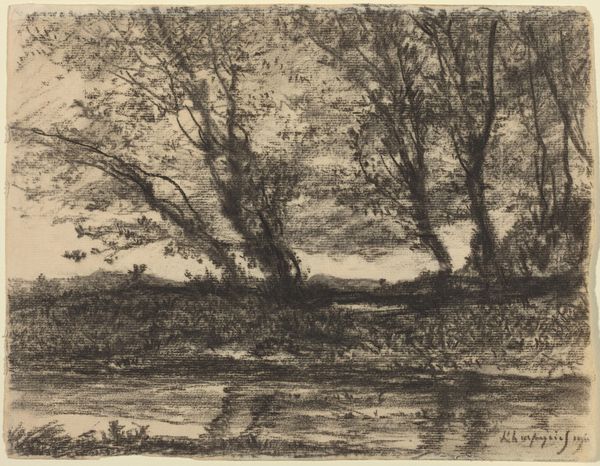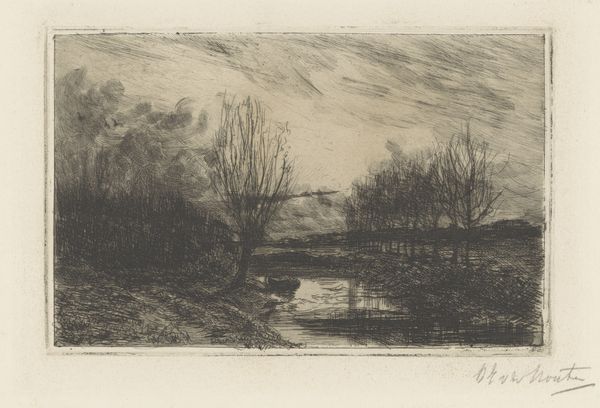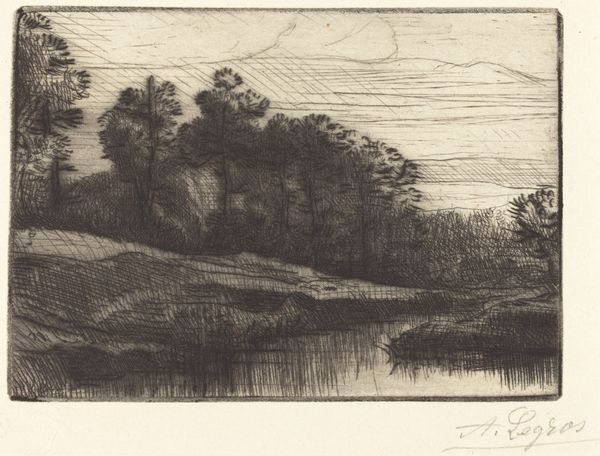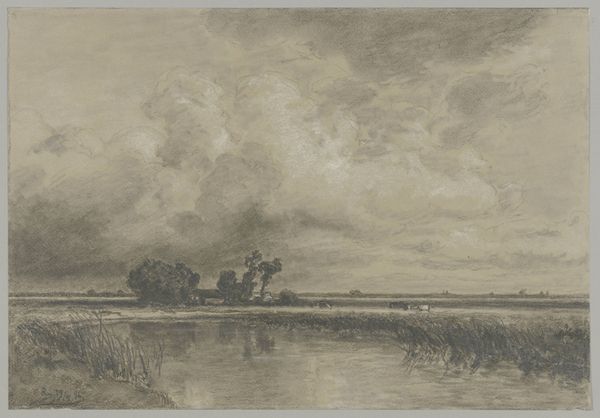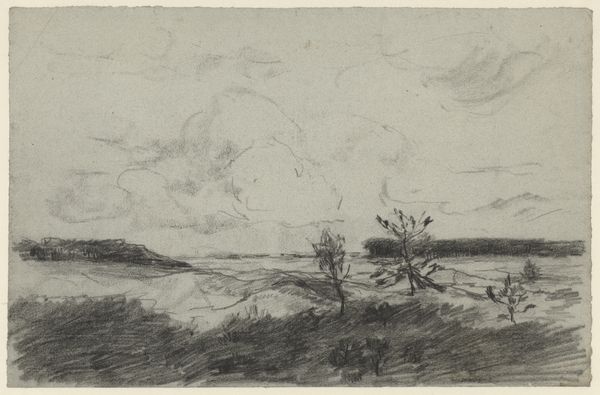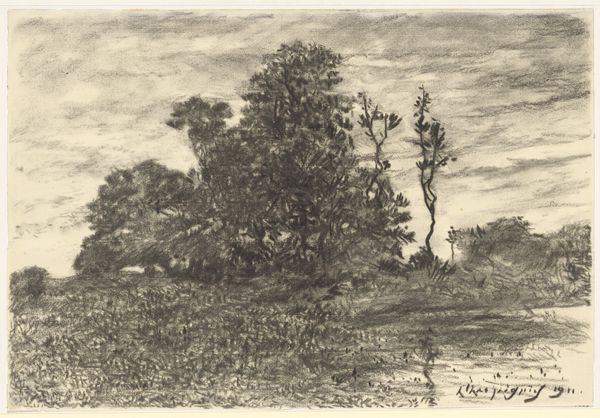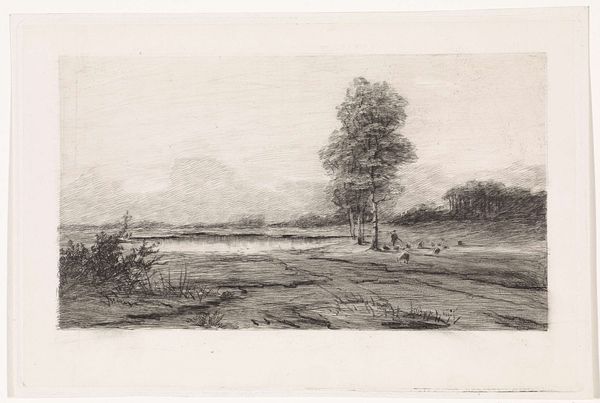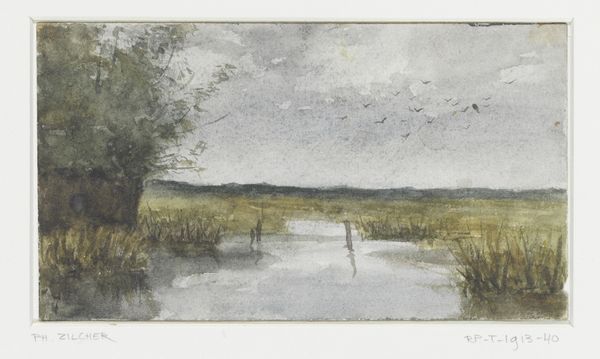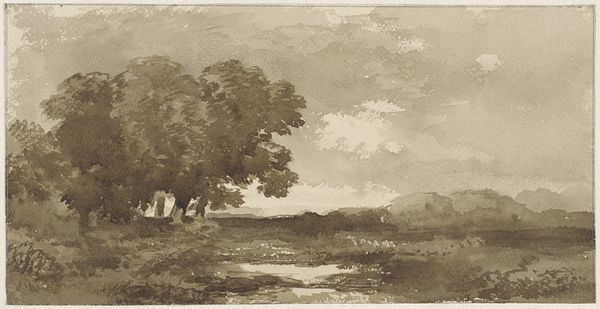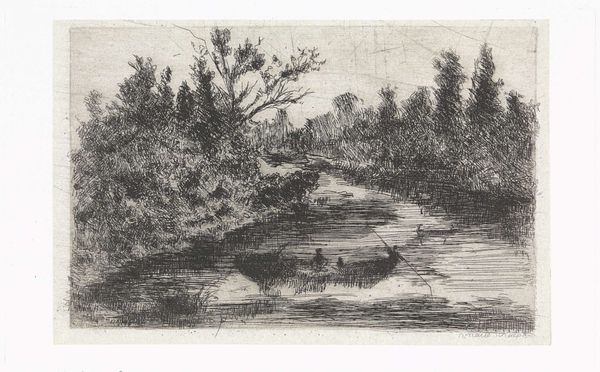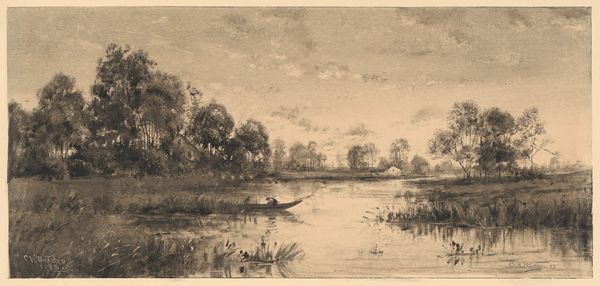
print, etching
# print
#
etching
#
landscape
#
realism
Dimensions: sheet: 13.3 x 20 cm (5 1/4 x 7 7/8 in.)
Copyright: National Gallery of Art: CC0 1.0
Curator: Before us is "A Pastoral Landscape with a Stream," an etching by Daniel Kotz from around 1890. It's rendered entirely in sepia tones. Editor: My first thought is: brooding. It's a muted scene, with a heavy sky weighing down the little stand of trees along the stream. The textures created by the etching are beautiful, almost tactile, though. Curator: Absolutely, and the etching process is key here. The work involves acid eating away at a metal plate to create the lines. Notice the density of the marks to create dark areas. The physical act of layering the lines speaks to a very dedicated labor. It gives depth and a certain melancholy, fitting for that period. Editor: The landscape itself feels politically charged. While on the surface, we see only a quiet river bank with scraggly vegetation, but consider this depiction against the backdrop of rapid industrialization. Doesn't it romanticize rural life? It harkens back to simpler, pre-industrial modes of being and labor at a time of incredible societal disruption. Curator: That's insightful. It really captures the romantic ideal and pastoral fantasy prominent during industrial shifts when craft practices began to get uprooted. The etching's accessibility too is crucial here – prints allowed a wider audience access to art. These kinds of prints bring art into the homes of those perhaps more directly affected by industrial labor, offering both comfort and a point of reflection on simpler times. Editor: Indeed. Its simplicity shouldn't overshadow the complex historical context. Who would have owned this etching? How would their own social position inform their appreciation for a landscape like this? This is a print about land and its people from a specific historical juncture. Curator: Thinking about it as a manufactured object intended for widespread dissemination does change my appreciation of this work. Its delicate strokes belie an awareness of art's burgeoning place in industrialized culture. Editor: For me, its muted quality only enhances how vividly it evokes these broader socio-economic shifts from its time. A seeming ode to simpler living when life and labor was anything but, depending on one’s place.
Comments
No comments
Be the first to comment and join the conversation on the ultimate creative platform.
